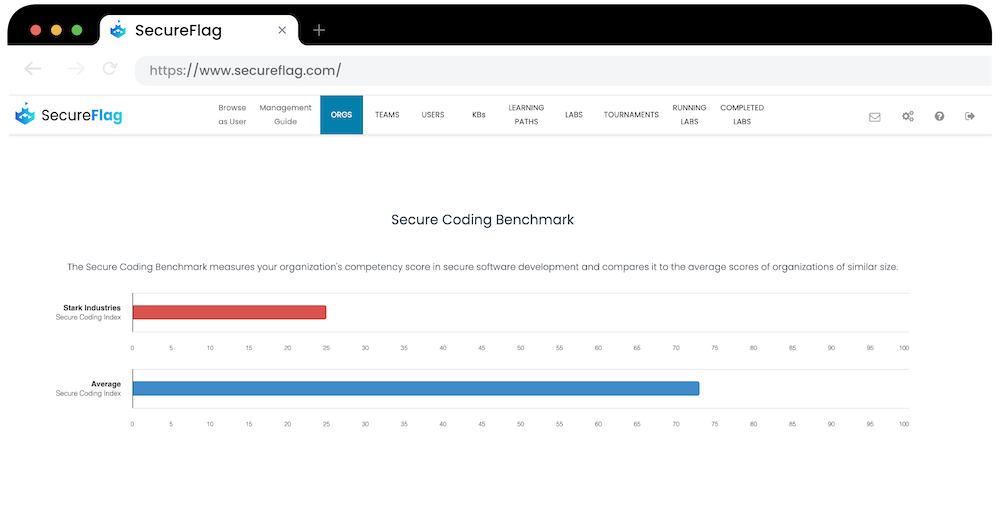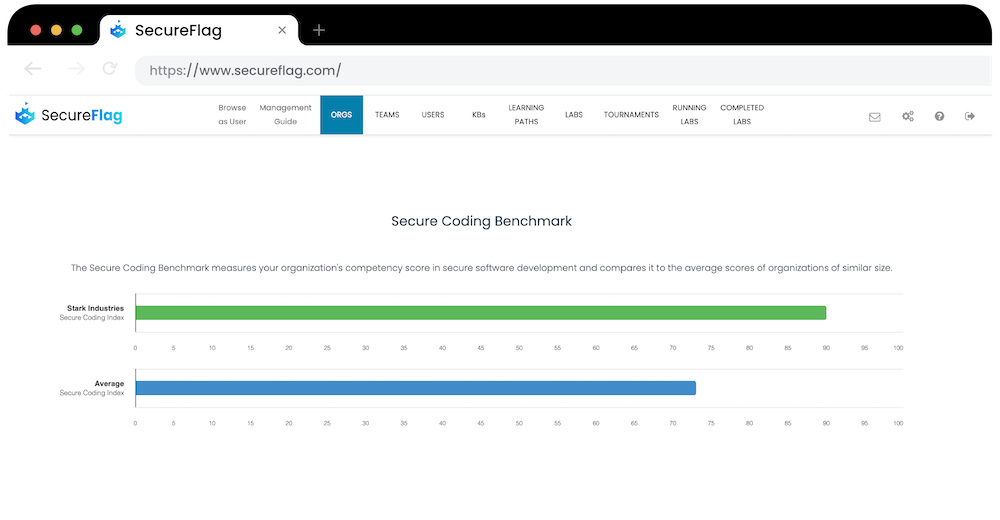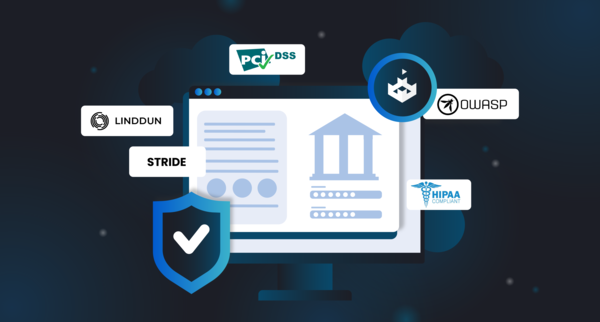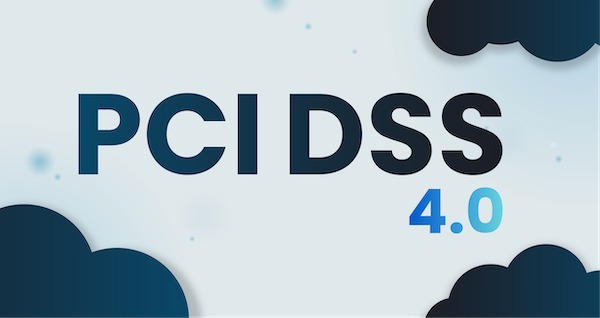Cybersecurity threats are everywhere, and the need for a reliable, secure coding training plan has never been greater. The risks posed by insecure systems are increasing and with that risk comes the extra burden placed on organizations to ensure their applications are secure, and customer data is protected.
Extra emphasis is placed on prioritizing secure coding practices and security training for everyone involved in the Software Development Life Cycle.
But how do you, as an organization or a leader, get an idea of how well your teams are doing?
Introducing the Secure Coding Benchmark
Secureflag’s Secure Coding Benchmark feature gives organizations an overview of their secure coding efforts and offers a comparative metric against industry averages. This feature helps organizations understand their current standing against organizations of a similar size or similar industry and incentivizes them to enhance their secure coding programs. Understanding the Secure Coding Benchmark
The Secure Coding Benchmark evaluates an organization’s secure coding practices and compares these scores with an aggregate average derived from other organizations on the SecureFlag Platform.

A low score is expected when a Secure Coding Program is first started since teams have only started training. After spending some time performing Secure Coding Training labs and Learning Paths, teams and organizations will see their score rise and using the Benchmark as a guide, will be able to set goals and aspire to meet or beat the average score.

Benefits of the Secure Coding Benchmark
Insight into Performance: The main benefit of the Secure Coding Benchmark is its insight into how your organization’s secure coding training is progressing. Organizations can monitor the overall performance and efforts of participating teams and conduct an internal assessment to identify gaps in their knowledge. By comparing your score with the average, you can gain a broader perspective on where you stand. It also helps gain insight into how much the organization’s teams are engaging with the Secure Coding Training program, with a low score possibly indicating low engagement.
Motivation for Continuous Improvement: Knowing your performance relative to other organizations can significantly motivate teams to improve their secure coding practices. The competitive nature of benchmarking encourages everyone to strive for better—no one wants to be last, after all.
Effective Resource Allocation: The Secure Coding Benchmark can help guide organization leadership in making informed decisions about resource allocation. By identifying if they fall short compared to the average of similarly sized companies or companies in a similar industry, organizations can prioritize allocating more training time to developers and teams. This might involve focusing on specific learning paths or training in certain programming languages.
Stakeholder Assurance: Secure Coding Benchmark is a clear and easy way to demonstrate your organization’s commitment to secure coding training and improvement. Clients are more likely to engage with organizations that are transparent about their security practices and show continuous improvement.
Real-World Applications: An example in the real world is when an organization uses Secureflag’s Secure Coding Benchmark to assess its secure coding practices. Leadership discovers that the organization’s score is below the average, prompting them to investigate teams’ engagement with the program and allocate more dedicated time to developers’ training to improve in specific areas, driving up the Secure Coding Benchmark and, in turn, making their applications more secure through training their developers.
Secure coding practices are non-negotiable for any organization aiming to protect its digital assets and maintain client trust.
Secureflag’s Secure Coding Benchmark feature offers a powerful visual tool for organizations to assess their secure coding practices at a high level. By providing detailed insights, motivating improvement, guiding resource allocation, and ensuring at-a-glance monitoring, the Secure Coding Benchmark helps organizations enhance their security posture and stay competitive in the evolving field of cybersecurity.
Get in touch to learn more about Secure Coding Benchmark or follow us on our social media channels for the latest updates and news.


